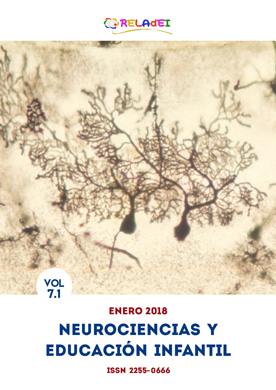Vol 7 No 1 (2018): Neurociencias y educación infantil, Monográfico. Introducción, pages 35-41
Submitted: 06-07-2018
Accepted: 06-07-2018
Published: 13-07-2018
My personal interest in the contributions of biology and, more particularly of neurosciences, to the knowledge of the processes of development, learning and training (to the motor, sensory, linguistic and emotional level) and, in parallel, my interest in the study of the processes of change that take place in the course of the successive stages of people’s lives, have led me to formulate the proposal (from which the book Education and Senescence was born) to make a comparative study between the infant mind and the old people mind and, more particularly, a study of the processes of bio-psychological and socio-anthropological aging. The questions raised have been the following: what is the structure of the brain and which are its functions?; how do brain changes cause changes in the mind? To answer these questions it became necessary to study the quite frequent researches in those years about brain and its functions. All this linked, on the other hand, to the contributions that, in relation to early childhood, Maria Montessori had given us in her work “The Mind of the Child”, as well as the theses of Darwinian evolutionism. It is about explaining human behavior in terms of activity of the nervous system and deepening the interconnections that are established among brain-mind-environment as well as the relationships among the neuronal bases, the physio-psychological mechanisms (act, perceive, think, speak , learn, communicate) and the role of environmental contexts in activating the development potential and triggering the mind activity.
Neurosciences, Development and learning, Brain, Interaction between mind and environment, Neurobiological education, Attention and learning


